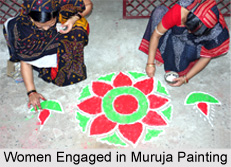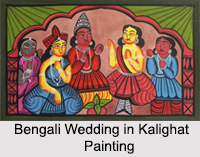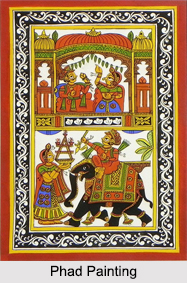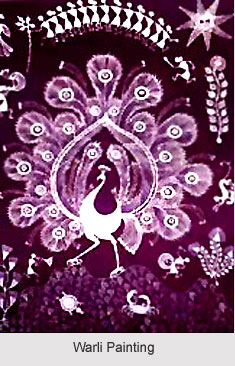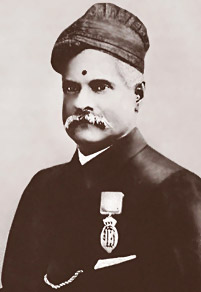 Works of Raja Ravi Verma portray excellent fusion of the elements of the early Tanjore custom of painting Nayikas (the feminine emotions being the central theme) and the graceful realism of European masters. Besides portraits and portrait-based compositions, Verma also embarked on perfecting an oeuvre for theatrical compositions based on Indian myths and legends. With oil paints applied thickly, Raja Ravi Verma created lustrous, wedged jewellery, brocaded textures, and subtle shades of complexions. He carefully and cleverly chose the touchy stories from Sanskrit Classics and depicted them in such a way that his paintings started telling the stories and became lively and enchanting on beholder`s eyes.
Works of Raja Ravi Verma portray excellent fusion of the elements of the early Tanjore custom of painting Nayikas (the feminine emotions being the central theme) and the graceful realism of European masters. Besides portraits and portrait-based compositions, Verma also embarked on perfecting an oeuvre for theatrical compositions based on Indian myths and legends. With oil paints applied thickly, Raja Ravi Verma created lustrous, wedged jewellery, brocaded textures, and subtle shades of complexions. He carefully and cleverly chose the touchy stories from Sanskrit Classics and depicted them in such a way that his paintings started telling the stories and became lively and enchanting on beholder`s eyes.
Raja Ravi Verma painted numerous series among which `Nala Damayanti`, `Shantanu and Matsyagandha`, `Shantanu and Ganga`, `Radha and Madhava`, `Kamsa Maya`, `Shrikrishna and Devaki`, `Arjuna and Subhadra`, `Draupadi Vastraharan`, `Harischandra and Taramati`, `Vishwamitra and Menaka`, `Seetaswayamvaram`, `Young Bharat and a Lion Cub`, `The Birth of Sri Krishna`, `Keechaka and Sairanthri`, `Village Belle`, `Lady Lost in Thought`, `Damayanti Talking to a Swan`, `The Orchestra`, `Lady with Fruit`, `The Heartbroken Jatayu`, `A bird devotee of Lord Rama is mauled by Ravana`, `Victory of Indrajit`, `A Family of Beggars`, `A Lady Playing Swarbat`, `Lady Giving Alms at the Temple`, `Lord Rama Conquers Varuna`, `Nair Woman`, `Romancing Couple`, `Draupadi Dreading to Meet Kichaka`, `Shantanu and Matsyagandha`, `Shakuntala Composing a Love Letter to King Dushyanta`, `Girl in Sage Kanwa`s Hermitage (Rishi-Kanya)`can be named which took new forms under his brush.
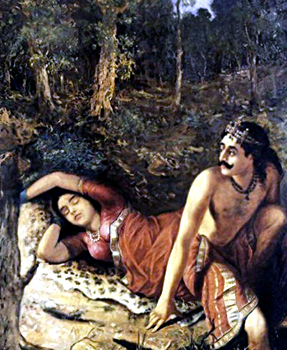 When Ravi Verma started to paint, the momentum of the great Mughal and Rajput schools had declined and hybrid styles had emerged in Delhi, Lucknow, Patna and Tanjore. It was in the Tanjore style that he started to paint. Ravi Verma was convinced that mass reproduction of his paintings would initiate millions of Indians to real art, and for this reason in 1894 he set up an oleography press called the `Ravi Verma Pictures Depot`. For photo-litho transfers, the Pictures Depot relied on Phalke`s Engraving and Printing whose proprietor, Dhundiraj Govind Phalke, became famous as Dadasaheb Phalke of Indian Cinema a few years later. In between 1888 and 1994 Raja Ravi Verma and his younger brother took a tour around India in search of images and landscapes for inspiration. After returning Ravi Verma painted a batch of pictures especially for his press, which was more of folk art and more sellable. The Calendar-Art thus brought-forth by Ravi Verma has been the origin of lakhs of gaudy god-pictures by ultramodern litho presses for decades.
When Ravi Verma started to paint, the momentum of the great Mughal and Rajput schools had declined and hybrid styles had emerged in Delhi, Lucknow, Patna and Tanjore. It was in the Tanjore style that he started to paint. Ravi Verma was convinced that mass reproduction of his paintings would initiate millions of Indians to real art, and for this reason in 1894 he set up an oleography press called the `Ravi Verma Pictures Depot`. For photo-litho transfers, the Pictures Depot relied on Phalke`s Engraving and Printing whose proprietor, Dhundiraj Govind Phalke, became famous as Dadasaheb Phalke of Indian Cinema a few years later. In between 1888 and 1994 Raja Ravi Verma and his younger brother took a tour around India in search of images and landscapes for inspiration. After returning Ravi Verma painted a batch of pictures especially for his press, which was more of folk art and more sellable. The Calendar-Art thus brought-forth by Ravi Verma has been the origin of lakhs of gaudy god-pictures by ultramodern litho presses for decades.
Raja Ravi Verma is considered as modern among traditionalists and a rationalist among moderns. He provided a vital connection between the traditional Indian art and the contemporary art, between the Thanjavoor School and Western Academic realism. He brought Indian painting to the attention of the larger world. In portrait painting too, Raja Ravi Verma reached a great level of excellence.

